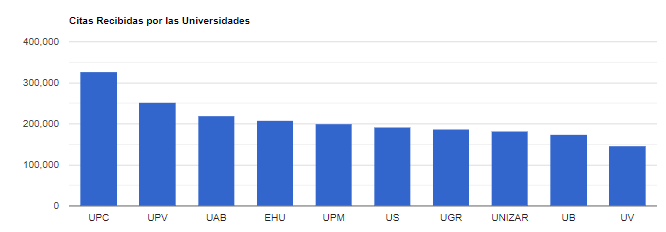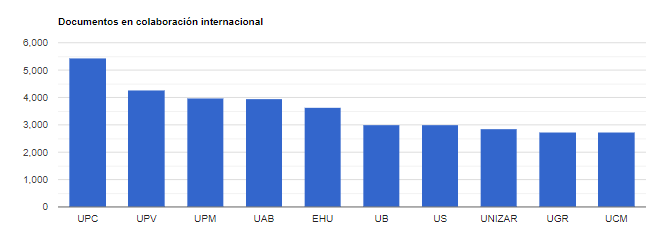The UPC’s scientific activity in Architecture, Engineering and Computer Science stands out in Spain
The UPC is ranked 1st among Spanish universities in scientific activity in five indicators for Architecture, Engineering and Computer Science.
In the 2021 edition of the IUNE Observatory ranking, the UPC is ranked 1st among Spanish universities in scientific activity in five indicators for Architecture, Engineering and Computer Science. It is also the institution with the highest percentage of documents cited in the aggregated result of all the areas of knowledge analysed.
Aug 30, 2021
Regarding scientific activity, the ranking published by the IUNE Observatory rates the Universitat Politècnica de Catalunya · BarcelonaTech (UPC) as the top Spanish university in five indicators for Architecture, Engineering and Computer Science: scientific production (publications per university), publications with international collaboration, citations received per university, number of publications in the first quartile (Web of Science (WoS)) and number of publications in top 3 journals (WoS).
Additionally, the UPC achieves the best results among Spanish universities in the percentage of uncited documents: it is the institution with the lowest percentage of uncited documents when considering the aggregated result of all the areas analysed in the ranking.

Citations received per university - Architecture, Engineering and Computer Science.
Source: Observatorio IUNE 2021.

Publications with international collaboration - Architecture, Engineering and Computer Science.
Source: Observatorio IUNE 2021.
The ranking published by the IUNE Observatory, an initiative of the Alliance 4 Universities, aims to spread and analyse the scientific and technological activity of Spanish universities. Therefore, the Observatory analyses universities’ activity based on an extensive set of indicators, grouped into seven areas: teaching staff, recognition, scientific activity, innovation, competitiveness, funding and training capacity.
Within scientific activity, the results are listed according to six areas of knowledge (Architecture, Engineering and Computer Science; Art and Humanities; Life Sciences; Experimental Sciences; Social Sciences; and Medicine and Pharmacology) and are listed for all areas or by area.

